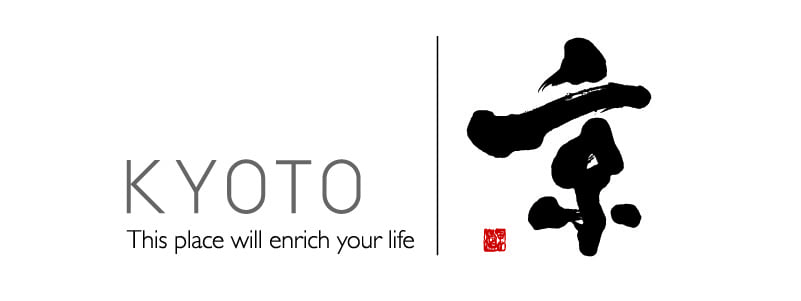Term archive
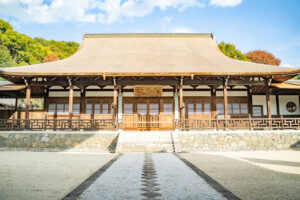
投稿タイプ:sightseeing
Manpuku-ji Temple
Obaku-san Manpuku-ji is the head temple of the Obaku sect of Zen Buddhism. In 2024, three of its buildings, including the main hall, were designated as National Treasures.
This temple was founded in 1661 by Ingen Ryuki (Yinyuan Longqi), a Chinese Zen Buddhist priest who came to Japan in 1654.
He introduced not only Zen Buddhism but also many things and cultural elements to Japan, such as ingen (common beans) and lotus roots.
One of them, Fucha Ryori (Chinese Buddhist cuisine), can actually be enjoyed at the temple (reservations required). It is characterized by its diverse offerings, with some artfully mimicking other foods, like one that resembles eel. It is fun to experience Chinese culture through food.
Also, the Chinese-style sutra chanting called Bonbai sounds like a song.
The precincts, with their historic buildings, are filled with a Chinese atmosphere. Other impressive sights include the Kaipan (wooden fish board), said to be the original form of mokugyo (a percussion instrument used to keep rhythm during sutra chanting), the golden statue of a deity Hotei Son (Budai), and the statue of Ragora Sonja (Rahula), from whose chest the face of Buddha emerges.
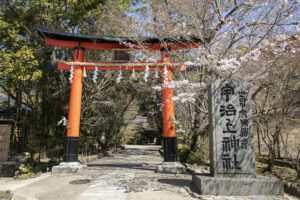
投稿タイプ:sightseeing
Ujikami Shrine
Ujikami Shrine is one of the World Heritage sites. It was once a single shrine together with Uji-Shrine, as a guardian shrine for Byodoin Temple.
The main hall (a National Treasure), built in the late Heian Period (794-1185), is the oldest existing shrine building in Japan. Built in the Nagare-zukuri style characterized by its long, flowing roof, it houses three structures to enshrine deities, which are two larger shrines flanking a smaller one in the center.
The worship hall (a National Treasure) is part of a building constructed in the Shinden-zukuri, the representative architectural style of aristocratic residences in the Heian Period.
The enshrined deities are Emperor Ojin, Uji no Wakiiratsuko, and Emperor Nintoku.
Legend has it that when Uji no Wakiiratsuko lost his way, a rabbit appeared and guided him, looking back repeatedly to ensure he was following. According to one theory, this is the origin of the place name Uji (rabbit path). Ujikami Shrine offers charming rabbit omamori (Japanese amulets), omikuji (small items containing fortune-telling slips), and so on.
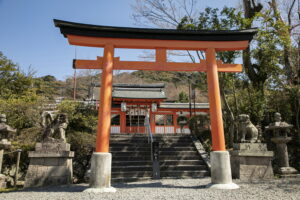
投稿タイプ:sightseeing
Uji-Shrine
Uji-Shrine was established in 313 on the right bank of the Uji River. The current main hall (an Important Cultural Property) was built in the Kamakura Period (1185-1333). Built in the architectural style called Sangensha Nagare-zukuri, it has a large roof and a facade with four pillars (creating three spaces). The shrine also preserves other various cultural properties, such as the oldest existing wooden komainu (a pair of guardian creatures called lion-dogs in colloquial English) and a valuable mask used in nō (a classical Japanese performing art).
The enshrined deity is Uji no Wakiiratsuko, believed to be a deity of academic achievement and success in entrance exams. This area was once home to Kirihara-Higeta-no-Miya, the detached palace of Emperor Ojin and the residence of his son, Uji no Wakiiratsuko.
Legend has it that when Uji no Wakiiratsuko lost his way, a rabbit appeared and guided him, looking back repeatedly to ensure he was following. According to one theory, this is the origin of the place name Uji (rabbit path). At Uji-Shrine, Mikaeri Usagi (looking-back rabbit), a messenger of a deity, guiding people to the right direction, is worshipped. There is a temizuya (place to purify hands with water) with a rabbit motif, cute rabbit omikuji (small items containing fortune-telling slips) and ema (small plaques to write wishes), and so on.
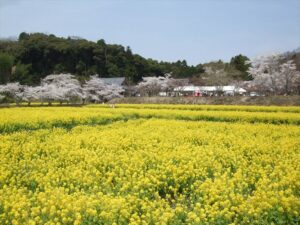
投稿タイプ:sightseeing
Omido Kannon-ji Temple
Omido Kannon-ji Temple is located in the “Infused with Tea” region of Kyoto in Kyotanabe City. The temple was founded over 1300 years ago at the request of Emperor Tenmu. It has been hit by numerous fires and in a fire in 1437 (Eikyo 9) 13 temples and 20 monk's houses were lost. Only Omidou (main hall) was rebuilt and survives to this day.
The main statue is the eleven-faced Avalokiteśvara Bodhisattva, which is made by a technique which paper or cloth is lacquered to make it look like wood, and is registered as a national treasure as one of the only seven eleven-faced Avalokiteśvara Bodhisattva statues in the country.
In spring, the cherry blossoms on the approach to the temple are in full bloom. Also rape blossoms cover the field in front of the temple, which is a spectacular sight to see.
In autumn, the main hall and garden are decorated with fall leaves. A light-up event is held every year and is the best way to enjoy the fall colors at the temple.
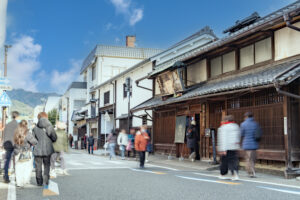
投稿タイプ:sightseeing
Ujibashi Street
Ujibashi Street is one of the main streets leading from JR Uji Station to Byodoin Temple. This street preserves old buildings including long-established shops of tea farmers and tea manufacturers. The street also boasts a vibrant mix of restaurants, cafes, bakeries, sweet shops, a supermarket, and many more. Not just tourists, but locals also enjoy shopping and dining here. The street leads to Uji River, and before Uji-bashi Bridge is a popular photo spot with a statue of Murasaki Shikibu, the author of The Tale of Genji.
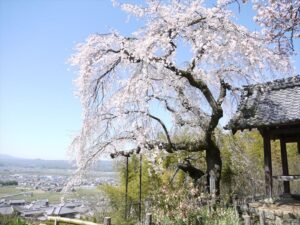
投稿タイプ:sightseeing
Jizozen-in Temple
Standing on a hill and to the south of Tamatsuoka Shrine, Jizozen-in Temple offers a sweeping view over the plains of the town of Ide. The glorious clouds of weeping cherry blossoms that bloom here are designated a natural monument by Kyoto Prefecture, and they are also relations of the weeping cherry trees in Maruyama Park, Kyoto City. The cherry trees are reputed to be some 280 years old.
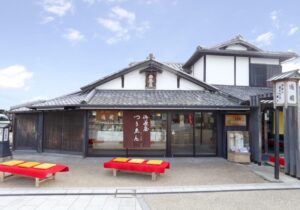
投稿タイプ:sightseeing
Tsuen-chaya Teahouse
Uji-bashi Bridge has been a vital point in Uji throughout its long history. This long-established teahouse, located on the east bank of the river, was built in 1160. It has served as not only a teahouse, but also a guardian of the bridge, wishing for the safety of travelers passing by. It is the oldest existing teahouse in Japan.
The current building was constructed in 1672, showcasing the architectural style of machiya (traditional townhouses) in the Edo Period (around 1603-1868). It is registered as a part of the Japan Heritage (Japanese Tea: Eight Centuries of Tradition).
Inside the teahouse, you can find chatsubo (traditional tea jars) made centuries ago, the wooden statue of the first-generation Tsuen created and presented by Ikkyu Sojun enshrined within, and a wooden bucket that is said to have been made by Sen no Rikyu and used by Toyotomi Hideyoshi to draw the clear water of the Uji River. Renowned historical figures, including Ashikaga Yoshimasa, Toyotomi Hideyoshi, and Tokugawa Ieyasu, have visited this teahouse.
At the storefront, you can purchase matcha (powdered green tea), sencha (one of the most common Japanese teas), hojicha (roasted tea), and more. Inside, you can enjoy matcha sweets like parfaits and zenzai (dessert soup made with red beans) made with plenty of freshly ground matcha, a combo of matcha and cha-dango (skewered rice dumplings made with matcha), cha-soba (buckwheat noodles made with matcha) and so on, while gazing out at the Uji-bashi Bridge and Uji River.
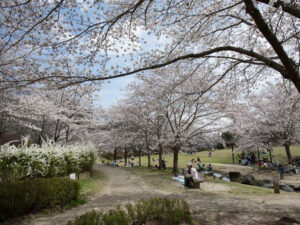
投稿タイプ:sightseeing
Keihanna Commemorative Park
Keihanna Commemorative Park is 24.1 hectares in size, and commemorates the establishment of Keihanna Science City (Kansai Culture and Science Research City) in 1995. The park includes both freely accessible and paid areas. The free areas include the 'Hiroba' a wide open plaza, which has cascading grounds shaped like rice-paddy terraces with large lawns for playing freely, and a childrens' playground. Also free of charge is the 'Tani-ai' valley, made to look like a typical Japanese landscape with a small stream, bamboo grove, and plum garden. The paid area includes the Suikei-en, a Japanese-style garden with a path that brings you around scenery including a magnificent rock cluster, cascading water ponds, colourful seasonal flora and an area to feed carp, making it enjoyable for children and adults alike. Visitors can also enjoy a panoramic view of the garden from Kangetsukyo Bridge, which is 123m long and 4m wide, and 10m above the water. Particularly spectacular is the view of autumn foliage from the Japanese maple tree valley. There, amongst the moss, approximately 80 trees line a small, delicate stream. Inside Suikei-en Garden you can also find Mebuki Forest and Nagatani Pond, which are likewise styled like traditional Japanese landscapes, perfect for a stroll to enjoy nature in all four seasons. Additionally, the park hosts a range of events, from firefly-viewing to star-gazing.
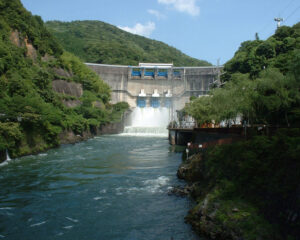
投稿タイプ:sightseeing
Amagase Dam
This multipurpose dam was constructed in 1964 to prevent floods, generate electricity, and supply drinking water. The majestic Amagaze Dam, standing at a height of 73 meters and a length of 254 meters, is a dome-shaped arch dam. If you're lucky, you might see the spectacular sight of the dam releasing water.
One of the dam’s charms is its location. It’s close to the city center of Uji, making it a relatively convenient stop for those sightseeing or going on a cycling trip. Downstream from the dam, there are World Heritage sites, Byodoin Temple and Ujikami Shrine.
From the dam, you can see the reservoir called Lake Houou (Lake Phoenix). Its shape resembles a bird spreading its wings, and the name represents people's hope to create a paradise on earth. You can enjoy the amazing view of the lake with the seasonal beauty of nature around it.
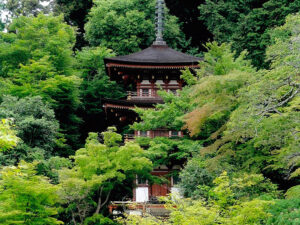
投稿タイプ:sightseeing
Joruri-ji Temple
Joruri-ji Temple, located in the "Kyoto Tea Country" region, is a temple of the Shingon Ritsu Buddhism (Nara sect) that holds 4 national treasures and 9 important cultural properties.
According to the records of the temple, the temple was opened in 1047 by Gimei Shonin and enshrines the “Yakushinyourai,” the Buddha who can cure all illness. The name of the temple is said to come from "Joruri," the realm where the Buddha lives.
The main hall of Joruri-ji is particularly long with nine Amida Buddhas enshrined inside. During the Heian period about 30 such nine-body Amida temples were built around Kyoto, but Joruri-ji is the only temple that still exists. Both the main hall and nine-body Amida Buddha are designated as national treasures.
To the east of the main hall is a garden containing a three-storied pagoda and Yakushinyourai Buddha statue arranged around a pond. The layout of the grounds is said to be in the shape of the Sandskrit letter "A," expressing paradise.
Surrounded by abundant nature, the temple has also has been designated as a special national scenic spot. You can enjoy beautiful scenery throughout the year, and the road connecting Gansen-ji and Joruri-ji is called the "Stone Buddha Road," and there are many stone Buddha statues make it the perfect place for hiking.
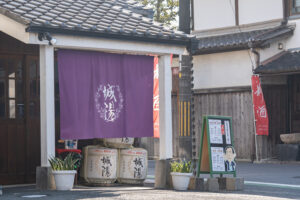
投稿タイプ:sightseeing
Joyo-Shuzo
Joyo-Shuzo, located in Joyo City, is the southernmost sake brewery in Kyoto, and the only sake brewery in the Kyoto Tea Country area. It was founded in 1895. The brewery takes advantage of the region’s nature and land features, including using the pure groundwater, to create its sake.
In the International Wine Challenge 2024 (SAKE division), its Junmai-Daiginjo 40 (Yamadanishiki) “Joyo” was a gold winner, and Junmai Ginjo 55 (Yamadanishiki) “Joyo” was a silver winner.
In addition to sake, the brewery is also known for its umeshu (Japanese plum wine) made with one of Joyo’s specialties, a premium plum variety called Joshuhaku. Their umeshu are aged for over three years, and made without any additives.
Besides, the brewery buildings, which have been there since the founding of Joyo-Shuzo, exude a historical charm.
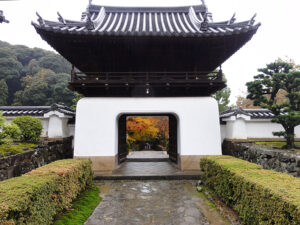
投稿タイプ:sightseeing
Kosho-ji Temple
This temple of the Soto Zen school of Buddhism was a training hall opened in Fukakusa (Fushimi) by the Buddhist monk Dogen in the Kamakura Period (1192-1333). It was later reconstructed in 1648 by Lord Nagai Naomasa of Yodo Castle, using the remains of Fushimi Castle. Highlights amongst the seven structures in the temple grouds include the Kotozaka, the approach to the temple that forms a tunnel of fall foliage in autumn; the temple gate made in the Ryugu-zukuri architectural style; “nightingale” hallway floors that squeak to alert those within of intruders; the Tenarai Kannon bodhisattva as mentioned in the classic "The Tale of Genji"; and chitenjo ceilings.
